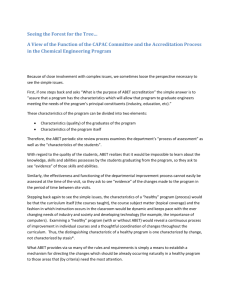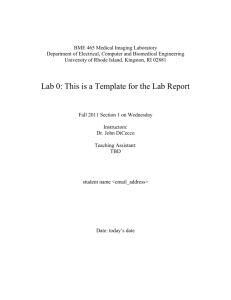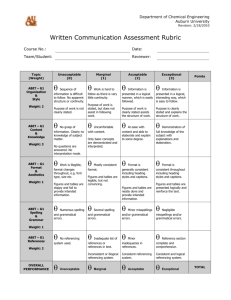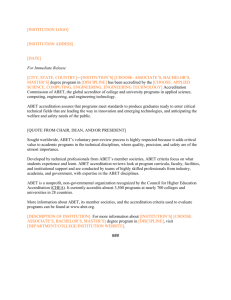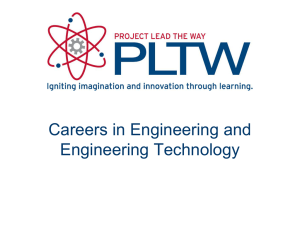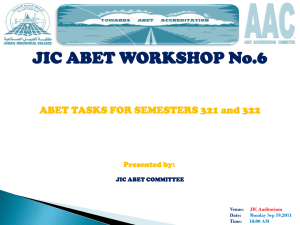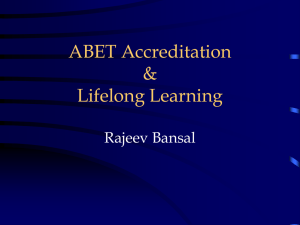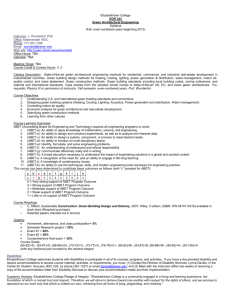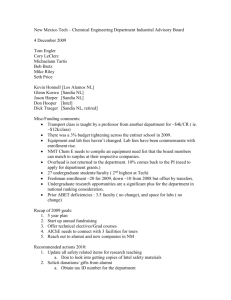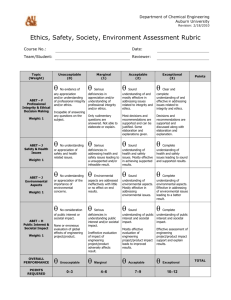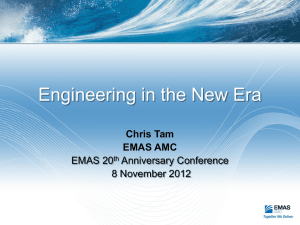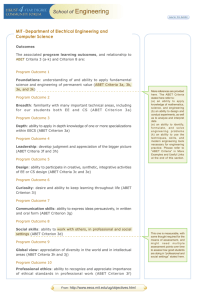CE 382 ABET Student Outcomes to be Assessed
advertisement
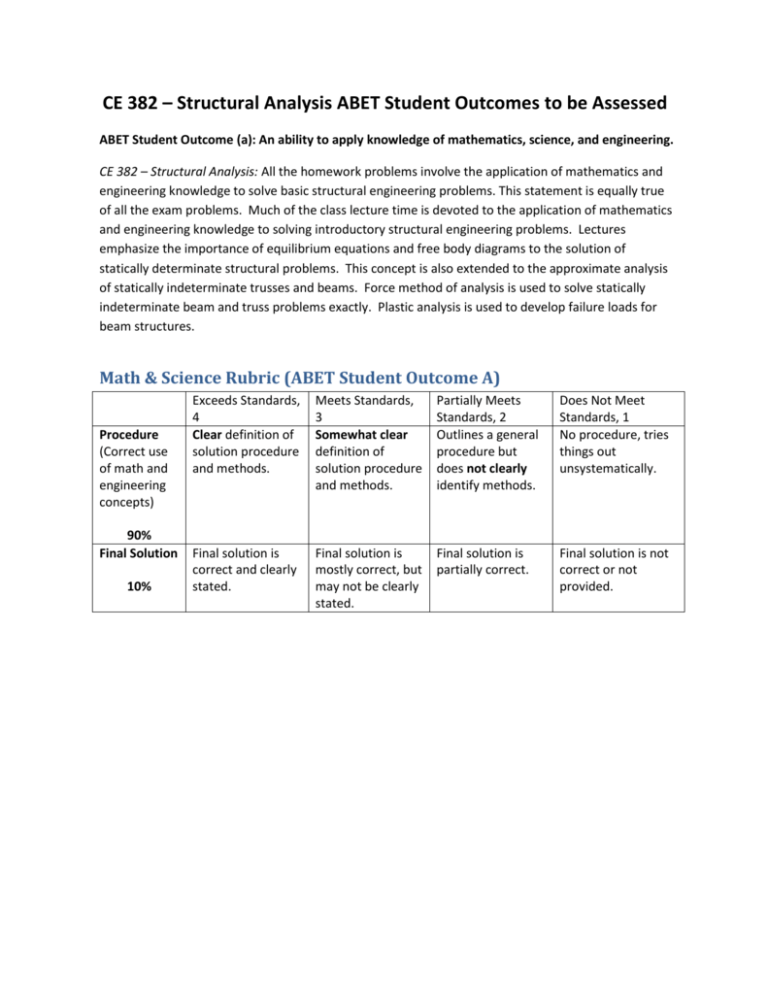
CE 382 – Structural Analysis ABET Student Outcomes to be Assessed ABET Student Outcome (a): An ability to apply knowledge of mathematics, science, and engineering. CE 382 – Structural Analysis: All the homework problems involve the application of mathematics and engineering knowledge to solve basic structural engineering problems. This statement is equally true of all the exam problems. Much of the class lecture time is devoted to the application of mathematics and engineering knowledge to solving introductory structural engineering problems. Lectures emphasize the importance of equilibrium equations and free body diagrams to the solution of statically determinate structural problems. This concept is also extended to the approximate analysis of statically indeterminate trusses and beams. Force method of analysis is used to solve statically indeterminate beam and truss problems exactly. Plastic analysis is used to develop failure loads for beam structures. Math & Science Rubric (ABET Student Outcome A) Procedure (Correct use of math and engineering concepts) 90% Final Solution 10% Exceeds Standards, 4 Clear definition of solution procedure and methods. Meets Standards, 3 Somewhat clear definition of solution procedure and methods. Partially Meets Standards, 2 Outlines a general procedure but does not clearly identify methods. Does Not Meet Standards, 1 No procedure, tries things out unsystematically. Final solution is correct and clearly stated. Final solution is mostly correct, but may not be clearly stated. Final solution is partially correct. Final solution is not correct or not provided. ABET Student Outcome (e): An ability to identify, formulate, and solve engineering problems. CE 382 – Structural Analysis: All the homework problems assigned to the students involve defined engineering problems as well as the exams. Engineering Problems Rubric (ABET Student Outcome E: an ability to identify, formulate, and solve engineering problems) Problem Statement (Identify) 10% Procedure (Formulate) Exceeds Standards, 4 Problem statement clearly shows full understanding of the problem. Clearly and completely states what information is known and what needs to be determined. Clear presentation of correct principles, procedure, and equations. Meets Standards, 3 Problem statement shows almost full understanding of the problem. Most of what information is known and what needs to be determined. Clear presentation of correct principles and 80% procedure, but with some minor errors in the equations. Final Solution Final solution is Final solution (Solve) correct. No errors would be correct, if or some very minor the minor errors in 10% calculation errors the equations are in the solution corrected. Some phase. additional minor calculation errors may occur in the solution phase. Partially Meets Standards, 2 Problem statement shows some understanding of the problem. Some of what information is known and what needs to be determined. Outlines principles and a general procedure, but with errors in the principles or procedure. Does Not Meet Standards, 1 No problem statement or very little understanding of the problem. Final solution is not correct. Some additional calculation errors may occur in the solution phase. Final solution is not correct, or not provided. No procedure, tries things out unsystematically. ABET Student Outcome (k): An ability to use the techniques, skills, and modern engineering tools necessary for engineering practice. CE 382 – Structural Analysis: One 75-minute lecture is used to cover the student version of the RISA 2D program. Students are encouraged to bring their laptop computers to class for the lecture. Input and output options are covered along with three different structures problems: beam, truss, and frame. To insure that the students learn to use the program, they are required to verify their hand calculated results on homework problems using the program. An extended homework assignment is given (moment envelope curve for a two-span statically indeterminate beam) to test student ability with student outcome (k), which is used to assess this outcome. Techniques, Skills and Modern Engineering Tools Rubric (ABET Student Outcome K) Selection of tool 10% Application of tool 60% Analyzing the results 30% Exceeds Standards, 4 Ability to always select appropriate tools, techniques, and skills to effectively solve problems or design systems Meets Standards, 3 Ability to usually select appropriate tools, techniques, and skills to effectively solve problems or design systems Partially Meets Standards, 2 Evidence of ability to sometimes select appropriate tools, techniques, and skills to effectively solve problems or design systems Does Not Meet Standards, 1 Little evidence of ability to select appropriate tools, techniques, and skills to effectively solve problems or design systems Ability to always correctly apply tools, techniques, and skills effectively Ability in most cases to correctly apply tools, techniques, and skills effectively Evidence of the ability in some cases to correctly apply tools, techniques, and skills effectively Little evidence of the ability to correctly apply tools, techniques, and skills effectively Ability to always reach correct conclusion of results gained from the tool Ability to usually reach correct conclusion of results gained from the tool Evidence of sometimes reaching the correct conclusion of results gained from the tool Little evidence of correct conclusion of results gained from the tool
